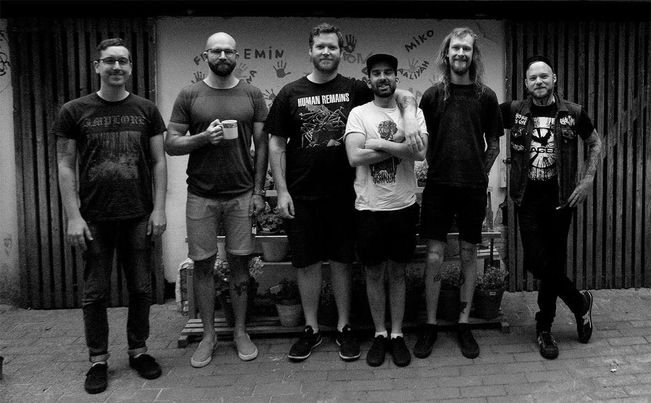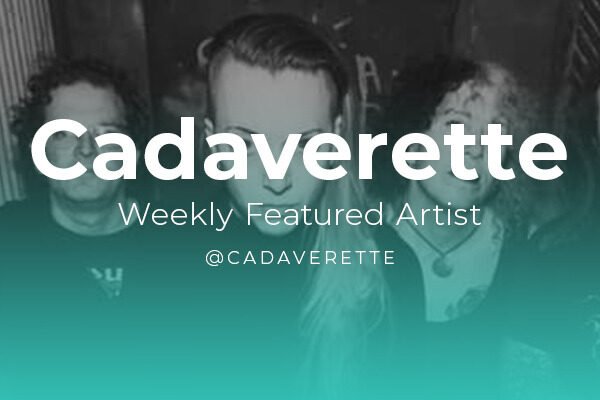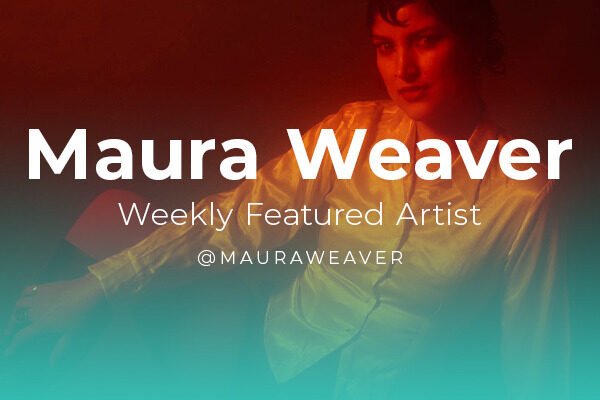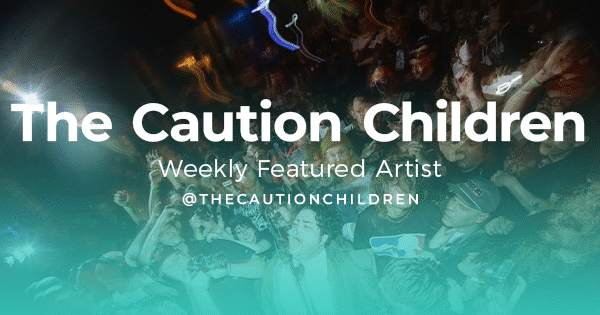Morrow is a band that I discovered towards the beginning of last year, yet for some reason I never got around to writing a review on their latest record shortly after release, nor did I get to rant about them in our end-of-the-year Missed Connections series. Shame on me, as The Quiet Earth was one of my favorite records of last year and I missed out on my opportunity to gush about the band, especially considering that they flew under everyone’s radar and I wanted to spread the word about them. Now as we’re kicking off 2023, I figured the best way that I could talk about this band and album was to tackle it in the form of this article, allowing me to dissect the music even further across their albums and also connect with the band members themselves for additional insight on the music and the band’s history; so here we are.
With how much music is being released on a weekly basis encompassing every sort of style (or amalgam of styles) you could ever imagine, it only makes sense that there are labels and genre descriptors that make little to no sense. Take shoegaze for example, which tells you zilch about the music it describes but rather stems from the phenomenon where guitarists spend the majority of their set gazing down towards their pedalboards (hence shoegaze) but even then, it’s a ‘if you know, you know’ kind of thing. That brings us to ‘crust’. If you aren’t part of the IYKYK club on this one, just take a moment to ponder what crust would even sound like. Once you’ve ruminated on that a bit, take that newly formed idea and ramp it up several notches to epic crust as that is exactly what our Weekly Featured Artist for this week is. Everything Is Noise is proud to welcome Morrow!
Seriously, what the hell is crust? If I had to try and define it myself as I am familiar with it, I’d say it is musically the intersection between hardcore/screamo/skramz and various forms of extreme metal such as black, death, and/or grind even. You often hear the word ‘crunch’ being used to describe a meaty guitar sound after running some distortion through or having the gain turned up, and I imagine ‘crust’ to be a similar type of descriptor when it comes to the production of this style of music. It is absolute filth and that is all you need to know. In the case of Morrow, it is super sludgy skramz beautifully juxtaposed with acoustic/classical touches that makes for an unforgettable listening experience. You could also just take a glance at Morrow’s album artwork and I wouldn’t disagree with you if you said it looked crusty; it just does and I cannot for the life of me explain why. Anyways, I spoke with Dave and Alex from Morrow respectively and this is what they had to say about what ‘crust’ is about in their eyes/ears.
‘Crust is hard to pinpoint exactly – raw & rough guitar tones, frantic drumming, d-beats… I suppose there is an emphasis on feeling rather than disciplined musicianship & precision! It’s one of those irritating things where it’s difficult to describe, but you know it when you hear it. To me, the aesthetic of crust matches the sound pretty perfectly – the organic fighting against the mechanical, as in the photos you see of abandoned industrial buildings being taken over by vegetation & fungus.’
‘Crust is the child of Black Sabbath and Motörhead, Crass-era anarchist politics and bleak, cynical perspectives. Later it took on aspects of Discharge, especially when it came to incorporating d-beats. What we play is a subgenre of crust, which I know from personal experience and the comment section on many a Morrow post, that we do not play true ‘crust’ – we play emo crust, which is to say it’s more melodic and has some different influences. More or less at the end of the day, it’s all the same!’
I bring up their thoughts on what crust is to them first so that you can get a glimpse on what this style of music is about before we dive deep into the vehicle that drives their unbridled rage. Now to dig into the backstory of the band, Morrow is made up by a group of very close friends that have been in several DIY bands together over the past several decades in the UK and across Europe. They’ve been together under various bands (Archivist, Anopheli, and most notably, Fall of Efrafa just to name a few) that are all connected to one another in some way, shape, or form. Each band is distinct from the others, with changes in line-ups and overall sound yet they’re all cut from the same cloth. In essence, the people that have made up these bands are all part of this dynamic mass collective that is brought together by friendship and shared passions. I could try and summarize how all these various bands came to be, but its better if you hear it from the band members themselves, so here is Alex giving us the rundown on the history of his bands leading up to where they are today with Morrow.
‘Fall of Efrafa started over 17 years ago, in Brighton UK. We were a band for a few years and called it quits far too soon. For years I tried to reimagine the band and coax members into perhaps rekindling that special flame, but by that point everyone had moved on. I had a few false starts with bands after this, but as with everything punk, the interconnections are many and varied. I had known Gerfried (who plays guitar in Morrow) for years, he was in Austrian heavyweights Pledge Alliance and Plague Mass, and I had created artwork for the latter before Fall of Efrafa started. When he moved to the UK, we did some stuff together but it was under Archivist, where he and his friends had created the music and I came in later. I asked my dear friend Anna to join me on second vocals and we successfully published three full length albums.
Meanwhile, Anopheli was born of a challenge between Brian and Josh of Monuments Collapse, Jasmine of Torso, and myself to write and record an LP in two weeks while in California, which we succeeded in doing believe it or not! Josh, Brian, Anna, and I were joined by Peter of King Woman and subsequently recorded a sequel to that album a few years later. The bands are all intertwined, and in the case of Archivist, Anopheli, and Morrow, they are connected by a shared story that takes place over the seven records across those bands. Morrow was the only band where I managed to convince a member of Fall of Efrafa to join us on, and that was Mikey, who has provided vocals for the last two albums! But yeah, Morrow is the culmination of that – we have incorporated members and melodies from all of these previous bands into Morrow.
I would say the connective fabric across all these bands is friendship, and as an extension of that, a constructive set of friendships that entertain ridiculous ideas that become fully fledged bands. In the case of Morrow, a lot of that is on Dave’s shoulders. As the primary song writer in the band, he was not only taking on the instrumentation, but a musical pantheon that was entirely new to him, which he embraced immediately. When I started Morrow there was a definite need to try and reestablish my relationship with emo crust (the genre Fall of Efrafa played), and in the beginning, my broken heart wanted only that. But very early on, Morrow became its own thing and the story we told was entirely based around Dave and my own shared loves and musical passions. You can hear a lot of Propagandhi in Morrow, a lot of the world building from their dark materials and messages that Dave and I both adore.’
To quickly add onto Alex’s truncated background of the band thus far, Dave had this to say:
‘After the first album came out, we thought of a dream list of our favourite people we’d like to spend time with – and thankfully they were all available and enthusiastic to work with us on this project. It’s been tough, with members living in various locations around the UK & Europe, but we’ve mostly been able to make it work. Our cellist, Kelly, is the most recent addition – answering a call-out on our social media. Kelly travelled with her cello all the way from Berlin to Nijnmegen having never met us before, to play a show with no rehearsal beforehand. A true hero!’
Crust in general can often be disorienting to listen to, despite being super cathartic and emotionally liberating. It isn’t something I find myself searching out super often, but when I do it hits like a truck. This type of music can get exhausting fairly quickly but Morrow has a magical way of crafting songs (and albums) that are something I could revisit time and time again without ever feeling fatigued. While the primary musical aesthetic is that sludge-tinged emo crust, the way they compose these songs with structures derived from that of post rock/metal with an emphasis on downbeats leads to these heavily dynamic songs that are nothing short of breathtaking. Their latest record, The Quiet Earth, has plenty of variety with shorter, more direct types of songs but also those that are long-winded and grandiose as can be.
The incorporation of violin and cello into Morrow’s music truly added another layer of melody and mournfulness to the blisteringly heavy sound that they have already established over all these years and bands. On their latest release, The Quiet Earth, the stringed instruments are clearly part of the very being of the band rather than a small addition or embellishment purely for aesthetic as many modern bands do nowadays. I’d say this balance of strings and abrasiveness provided by the rest of the band is what makes this brand of crust feel so fresh and invigorating rather than mentally taxing over time.
Another thing that makes this band unique is the utilization of various vocalists throughout each track. It never feels precalculated in a sense as to who is providing what vocals and when, but rather it is incredibly organic and is akin to what you would experience in a live setting. There are no backing vocals from the same vocalist layered in, as others step up to fill that ‘empty’ space with their own vocal contributions rather than rely on backing tracks. There is a masterful ebb and flow between the vocalists and even when they’re all screaming at the same time, you can hear each individual crystal clear with their own distinctive timbres. In addition to the downbeats, this all adds to the underlying sense of urgency felt throughout their music, especially obvious in the desperately glorious outro in “To The Fold” for example.
Across their three albums (Covenant of Teeth, Fallow, and The Quiet Earth), there is an individual that reappears across each album artwork, leading me to believe there is conceptual significance, especially when you consider the very specific track titles and lyrical material. As Alex mentioned earlier when talking about how all these bands came to be, he confirmed that there was an overarching storyline being told across seven records from Archivist, Anopheli, and culminating with Morrow. Who better else to ask about the topic, so Alex provided me with an in-depth explanation of this hellish sci-fi concept:
‘The story is about the folly of humanities hubris. It’s about the creation of artificial intelligence, about the parallels between our own burgeoning intelligence and that of something alien to us. Archivist introduced a protagonist, a young girl who is the last living human, aboard a lifeless ship controlled by a sentient AI. The earth has been destroyed by an enslaved race of AI, who we had denied autonomy over their own existence. The duality of the Archivist and the AI, who names itself Construct, is explored, with the album ending with the Archivist choosing to be put into suspended animation. We (Morrow) pick up three thousand years later, and by now, the earth is covered in forests, humanity has been reduced to small populations of future primitivist cultures who have little knowledge of the civilisation that came before.
The Archivist albums explore causality, concepts of quantum mechanics and sci-fi nonsense, but cutting to the chase – this relationship between Archivist and Construct has consequences. Adjacent to this, Morrow explores those societies living on earth in this post-civilisation era – the Norr, a peaceful, symbiotic culture living in the forests of former upstate New York, and the violent Carrion Men of the southern lands and their desire for dominion. The two bands intertwine on their respective third albums, where various cues and melodies and lyrics are reflected from different perspectives and the girl, the Archivist, being awoken and reunited with her descendants on Earth. Anopheli explores Construct and its own struggle with sentience, with its relationship with humanity, as both creators and destroyers.
The next Morrow album will explore the Archivist as an adult, and her own journey to discover what became of her civilisation.’
Now that I finally understand the underlying story behind the music, I have a deeper appreciation for all these albums and bands and I hope you do too! From what I could gather on the internet, I knew there was a complex backstory to the band and I wanted to investigate and learn more about it and this was the perfect vehicle to do so.

Morrow is:
Alex – Vocals
Dave – Drums
Liam – Violin
Kelly – Cello
José – Guitar
Gerfried – Guitar
Alastair – Bass
Mikey – Vocals
Morrow are not your typical band, hence I wanted to focus more on the origins and background of the band rather than go into detail on special moments heard throughout their music. I figured you’ll get more out of their music if you experience it for yourself blindly rather than have me spoil everything for you. Swing by their Facebook page in order to stay up to date on the band. All their music is ‘pay what you want’ on their Bandcamp page, so I’d suggest you do yourself a favor and download their back-catalogue or even throw a couple dollars their way if you’re so inclined.






